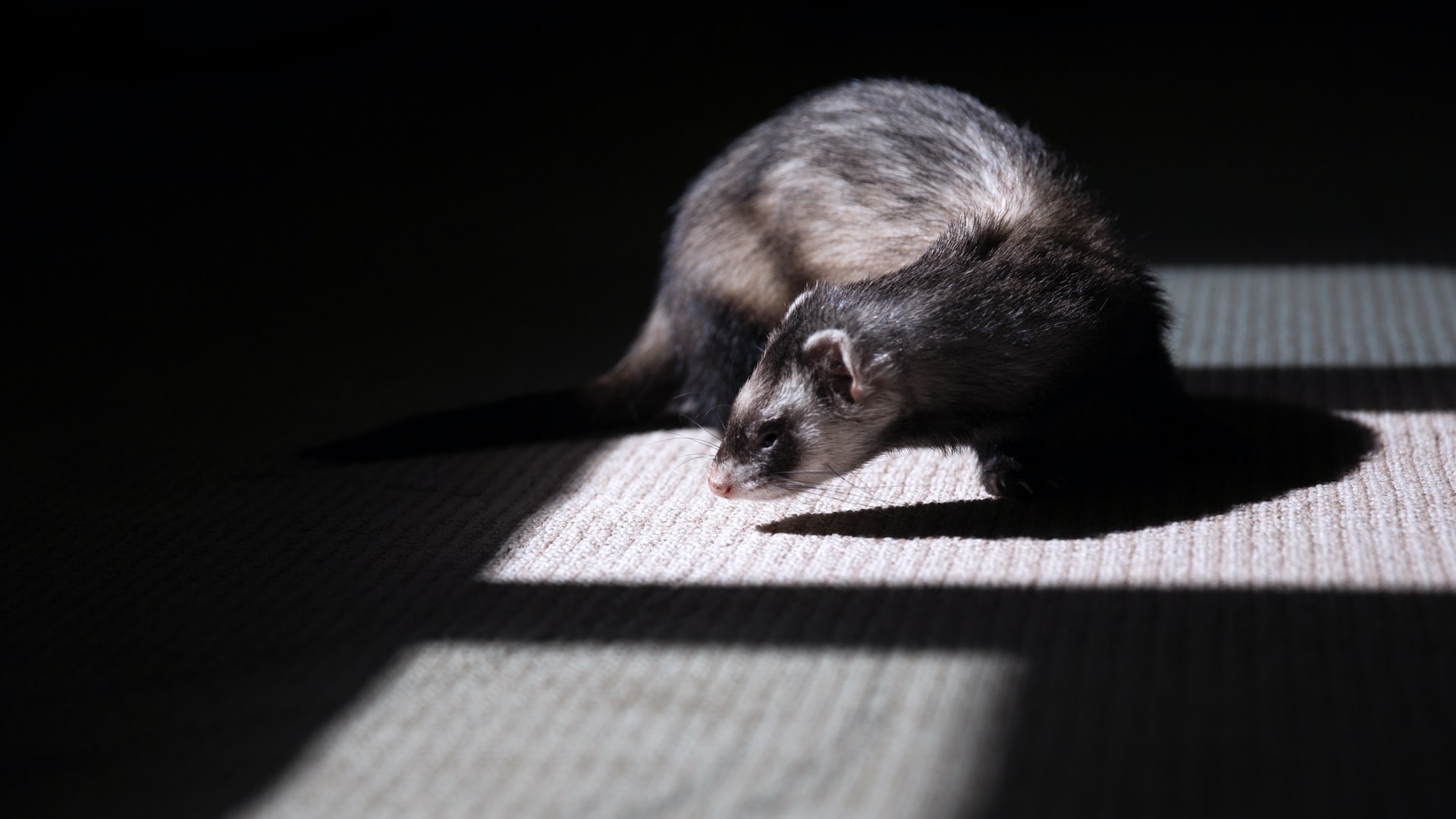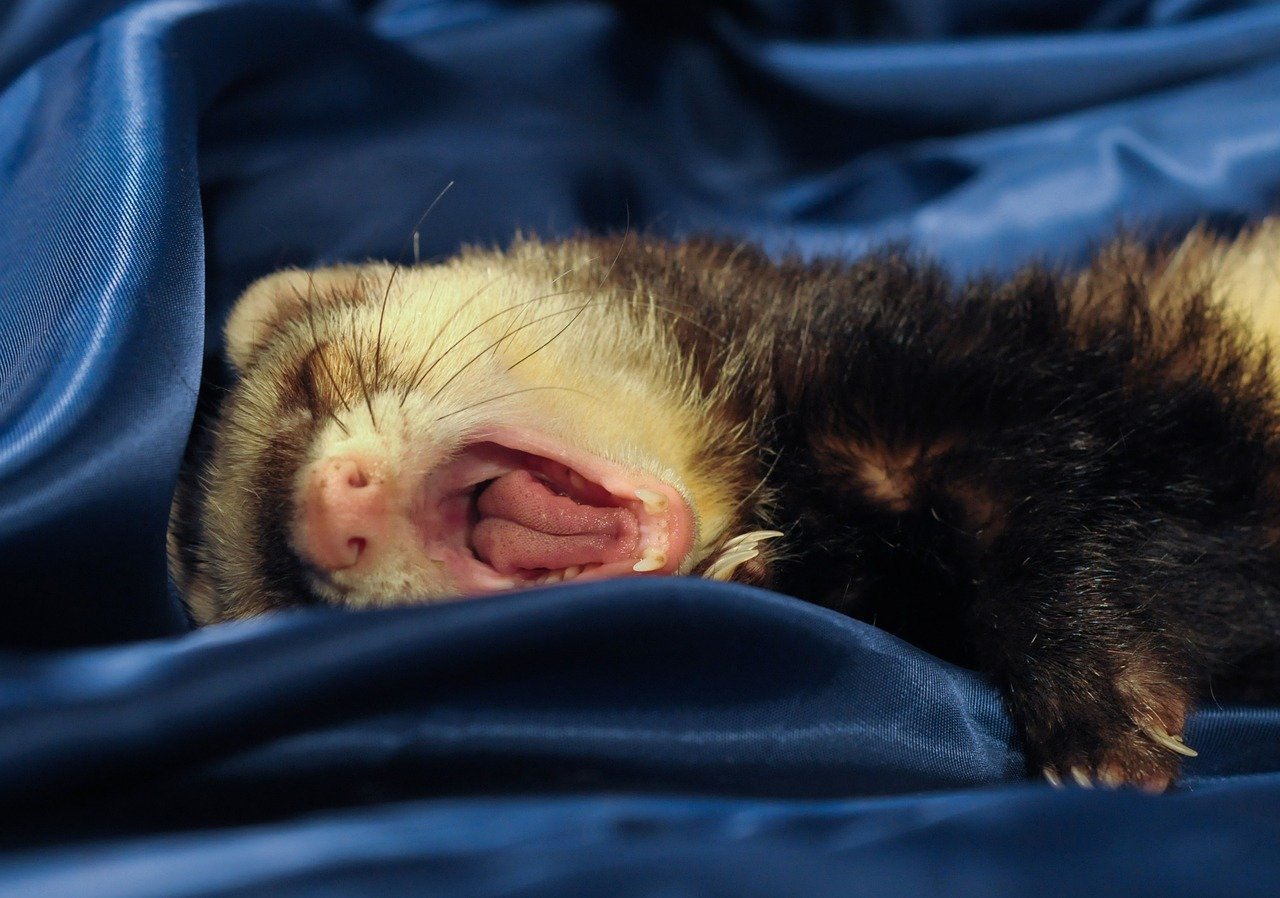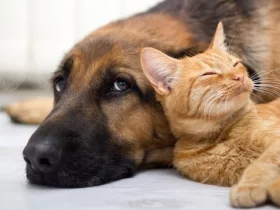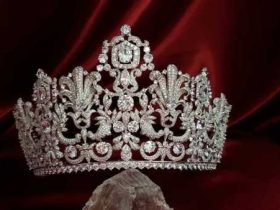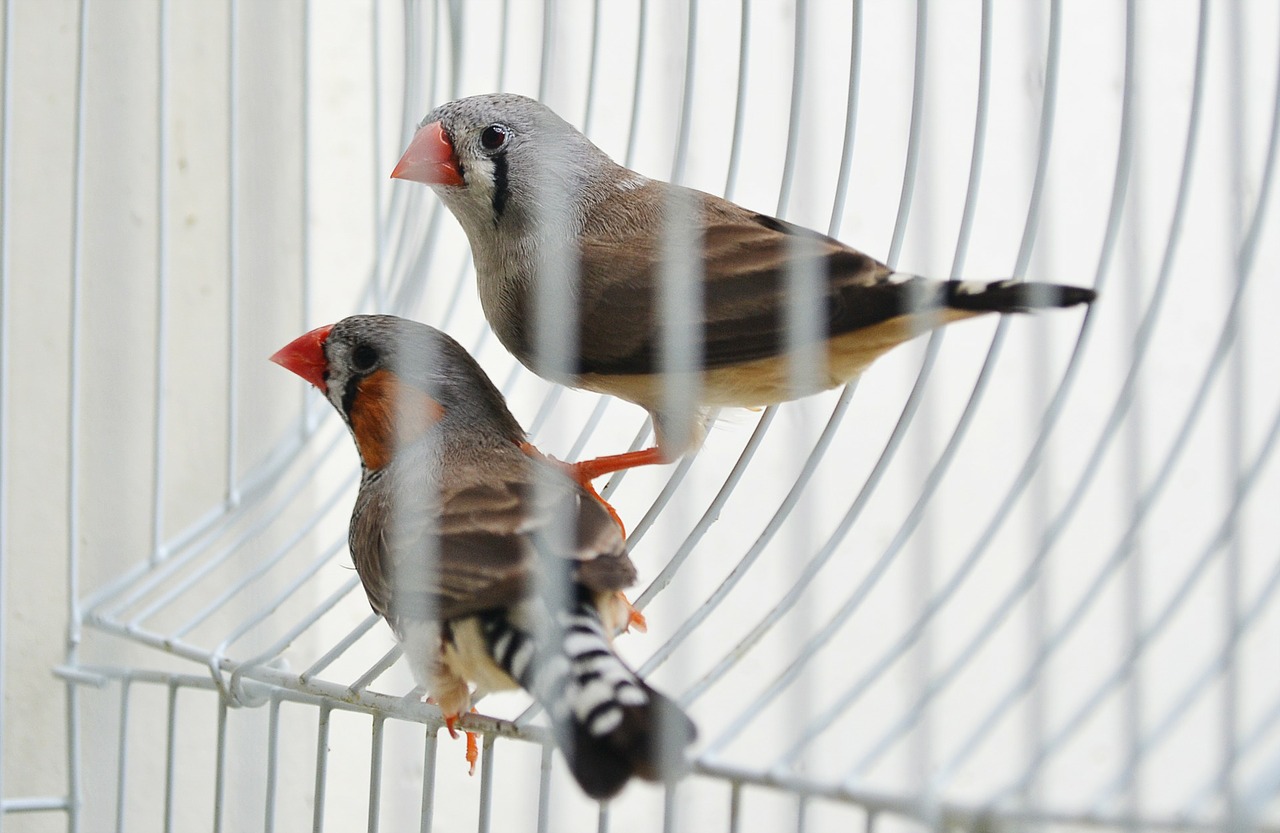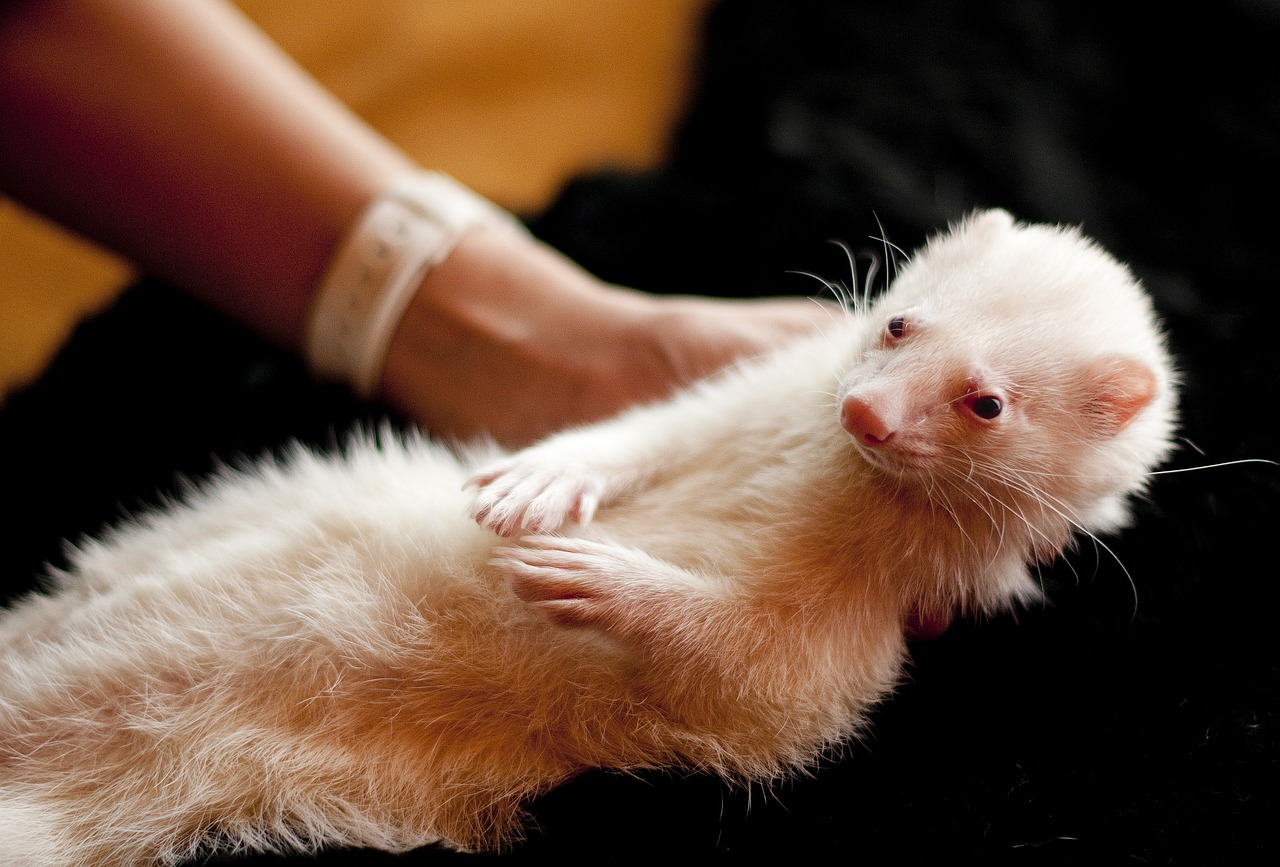Ferret history as a domesticated animal dates back to 4BC. Although it is unclear exactly which culture first domesticated this unique creature, his use in the control of vermin has been documented as far back as the reign of Caesar Agustus. Due to their long, thin size and shape these little creatures were well suited to delve into small caves, animal holes and crevices and flush or “ferret” out rodents, rabbits and pests. They were the popular animal in Europe for rodent control until the late 18th century when cats came into favor.
Domesticated ferrets historically were great hunting animals and were prized by the elite for their hunting abilities. It was not uncommon for ferrets to be used in conjunction with hawks where the ferret would be released into the brush to flush out the game that the hawk would then retrieve for the master.
The ferrets history as a companion animal is quite apparent in old world paintings such as the painting “Pope Celestinus III Grants Privilege of Independence to the Spedale”, by Domenico di Bartolo and done in 1443 which depicts a young man with his pet ferret sitting on his shoulder! Another painting of John the Fearless which sits in the Louvre depicts a man with a live ferret wrapped around his neck like a scarf. And, of course, the painting “Lady With Ermin” by Leonardo da Vinci and painted in the late 1400’s shows a lady with her pet ermine or ferret. They were, in fact popular pets and were found in many great homes and castles.
Modern ferret history has found many uses for this entertaining little creature. They have been stars in several movies and of course are very popular pets today although, thankfully, we no longer need them to keep the vermin population down in our households! Some are still used on European farms for such purposes, however. In the 1940’s, they were bred to be used as fur coats, a practice which is no longer done and were even put to work commercially to string cables down long thin conduits.

